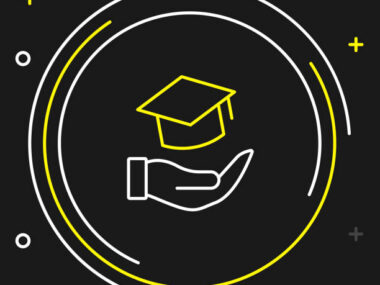Every student’s educational journey is as unique as their fingerprints, but navigating the complex maze of academia often leaves many feeling lost. Cue the student education plan—your academic GPS to success. This customized blueprint guides students through the labyrinth of courses, extracurricular activities, and personal goals, plotting a clear and personalized pathway toward their aspirations.
As we delve into the nuances of student education plan, we uncover the stepping stones that pave the way for academic triumph and personal fulfillment.
The Imperative of a Customized Learning Goal
Imagine a world where every student’s education is tailored to their strengths, interests, and dreams. That’s the power of a student education plan. It begins with Customized Learning Goals, anchoring the plan firmly to each student’s unique ambitions and capabilities.
These goals form the core of your learning journey, directing every educational choice you make. Within a well-crafted plan, these learning goals become the compass by which a student navigates the future.
They not only reflect current interests but are also broad enough to accommodate evolving passions. As students soar from the fundamentals of algebra to the complexities of calculus, their customized learning goals adapt, pushing the boundaries of their intellectual landscapes.
Identify strengths and areas of interest: This helps set the course for relevant academic and extracurricular pursuits.
Focus on long-term aspirations: Whether it’s preparing for a particular career or aiming for higher education, your goals should align with future plans.
Incorporate personal development: Goals should also nurture personal growth outside the curriculum, such as leadership skills or community service.
By aligning personal objectives with educational routes, these tailored goals ensure that every class, every project, every academic decision is a step forward in a student’s chosen direction.
Milestone Tracking: Your Academic Roadmap
A key feature of the student education plan is the Milestone Tracking system. This isn’t just about setting goals; it’s about defining the steps necessary to reach them. Milestones serve as checkpoints—rally points where students can assess their progress and recalibrate their efforts.
This tracking system ensures that each phase of education builds toward the ultimate academic and career objectives. It’s not just about crossing off classes; it’s about accruing the kind of knowledge and experiences that will serve as a foundation for future success.
- Set specific academic milestones: Such as completing pre-requisite courses by certain dates.
- Include career milestones: Like obtaining internships or attending networking events.
- Monitor personal growth: Encourage engagement in activities that develop soft skills and personal interests.
With a clear set of milestones in place, students steer clear of ambiguity and stay on a pathway that leads to the fruition of their dreams.
Resource Allocation: Equipping for Excellence
The path to reaching one’s academic goals often requires more than sheer will and determination. The Resource Allocation section of the student education plan is where you identify and map out the tools and support necessary to cross the finish line.
Whether it entails tutoring sessions or access to advanced technology, having the right resources can make all the difference.
Students facing challenging subjects may need to allocate extra study time or find a tutor specializing in perplexing concepts. Those eyeing top universities might earmark resources for SAT prep courses. And for those with learning differences, perhaps securing accommodations is critical.
Assess individual needs: Each student will require different resources based on their strengths and weaknesses.
Connect with institutional offerings: Many schools offer workshops, labs, study groups, and more.
Explore community resources: Libraries, local businesses, and even online platforms often offer tools that can enhance learning.
When resources align with objectives, a student’s educational journey moves from a walk to a sprint.
Parent-Teacher Collaboration: Nurturing Success Together
The Parent-Teacher Collaboration aspect underscores the symbiotic relationship crucial for nurturing student growth. This synergy between home and school forms a fortified network of guidance and support, essential in maintaining a student’s educational trajectory.
A well-planned education strategy welcomes and integrates parental insights and teacher feedback, forming a coalition focused on propelling students forward. Parents provide context about their child’s motivations and challenges, while teachers contribute their professional expertise.
Schedule regular meetings: Frequent communication can help to track progress and early detection of potential challenges.
Share insights and observations: Both teachers and parents can provide valuable information from different perspectives.
Create a united front for motivation: When students see a unified team supporting them, their own commitment to their goals often strengthens.
Framed by a cooperative spirit, the educational plan becomes a joint venture where each participant is vested in the student’s success.
Adaptability and Revision: Keeping the Plan Current
Stagnation is the enemy of progress and in the dynamic flux of a student’s life, the ability to adapt and revise is key. Foreseeing that interests might change as students grow is why education plans are crafted with flexibility at their core. Scheduled reviews serve as opportunities to reflect, reassess, and refine the roadmap as required––ensuring that the trajectory aligns with the student’s evolving passions and circumstances.
Set dates for periodic reviews: This ensures the student education plan remains relevant and goal-oriented.
Be open to course corrections: If a student discovers a new passion, the education plan should evolve to reflect that.
Allow for adjustments due to unforeseen challenges: Life events may necessitate a shift in direction or pace.
A student education plan must be as dynamic as the student it serves, transforming and growing to fit their changing landscape of aspirations.
Best Child Education Plan In USA
When it comes to investing in your child’s future, choosing the best student education plan is crucial. In the United States, there are several vehicles designed to aid in saving for your child’s education expenses. It’s important to understand what each plan offers so you can make an informed decision that aligns with your financial goals and educational aspirations for your child.
529 College Savings Plans
Arguably the most popular education savings vehicle in the USA is the 529 College Savings Plan. Each state sponsors its own 529 plan, and some states offer multiple options. You are not limited to your own state’s plan, although there may be tax advantages to using your home state’s plan.
Features of 529 Plans include:
– Tax Advantages: The growth of investments in a 529 plan is tax-deferred at the federal level, and withdrawals are tax-free when used for qualified educational expenses, which include tuition, room, board, and required materials. Many states also offer tax benefits for contributions.
– Investment Options: You can choose from a range of investment options, including mutual funds and ETFs. Some plans offer age-based options which automatically reallocate assets as your child approaches college age.
– High Contribution Limits: Contribution limits are quite high, often over $300,000 per beneficiary, depending on the state.
– Ownership Control: The account owner retains control of the funds, not the beneficiary, which ensures the funds are used for their intended purpose.
Coverdell Education Savings Accounts (ESAs)
Another option is the Coverdell ESA which also provides tax-free growth of contributions when used for educational expenses. Unlike 529 Plans, Coverdell ESAs can be used for K-12 expenses, as well as post-secondary education.
Key aspects of Coverdell ESAs:
- Contribution Limits: Contributions are limited to $2,000 per beneficiary per year and are not tax-deductible.
- Income Restrictions: There are income limitations for those eligible to contribute to a Coverdell ESA.
- Wide Range of Education Expenses: Funds can be used for a variety of educational costs across a range of schooling options, including private elementary and secondary school.
Custodial Accounts: UGMA and UTMA
The Uniform Gifts to Minors Act (UGMA) and the Uniform Transfers to Minors Act (UTMA) are custodial accounts that are not exclusively for education but can be used to save for a child’s future expenses, including education. When the child reaches the age of majority, they gain control over the assets.
Characteristics of UGMA/UTMA accounts:
Flexibility in Use: The beneficiary can use the funds for anything, not limited to educational expenses.
Tax Impact: The first $1,100 of unearned income is tax-free, the next $1,100 is taxed at the child’s tax rate, and any income above $2,200 is taxed at the parents’ marginal tax rate if the child is under 19, or under 24 and a full-time student.
It’s important for parents and guardians to understand this next $1,100 is taxed at the child’s tax rate, and any income above $2,200 is taxed at the guardian’s or parent’s rate, which could be a critical factor to consider when planning for your child’s educational future.
It’s essential for parents and guardians to understand tax implications when using UGMA (Uniform Gifts to Minors Act) and UTMA (Uniform Transfers to Minors Act) accounts as part of a student education plan.
Not only do these custodial accounts offer a way to save for a child’s educational future, but they also come with specific tax this taxation nuance of UGMA (Uniform Gifts to Minors Act) and UTMA (Uniform Transfers to Minors Act) custodial accounts to optimize their student education planning strategy.
If managed wisely, these accounts offer a great avenue to save for college expenses while minimizing tax implications. To maximize the advantages that can make them an attractive component of college savings strategies.
By effectively managing contributions and understanding the income thresholds, families can maximize the tax benefits of UGMA and UTMA accounts. However, it’s crucial to consult with a tax professional to navigate the complexities and optimize your student’s education financial plan.
Remember, planning ahead can lead to substantial savings over the life of the account and ease the financial burden when tuition bills start to arrive. growth potential of your investment and minimize tax liabilities, it is advisable to consult with a financial advisor who is knowledgeable in education planning.
They can provide personalized advice on how to incorporate UGMA and UTMA accounts into your overall education savings plan, ensuring your contributions work effectively towards reaching your student’s educational goals.
Remember, the earlier you start saving with a clear understanding of the tax impacts, the better prepared you’ll be to support your child’s higher education journey.
Student Education Plan For College Students
When it comes to devising a student education plan for college students, a one-size-fits-all approach is impractical. College students hail from a plethora of backgrounds, each with unique goals, learning styles, and career aspirations. The foundation of an effective education plan lies in personalization and adaptability.
Personalized Curriculum Pathways
Students should be encouraged to engage in discussions with academic advisors to chart out a course selection that aligns with their future goals. For students leaning towards academia or research, this could mean a heavy emphasis on independent study or research opportunities.
Conversely, students eyeing the corporate world may benefit from a blend of theoretical courses supplemented with practical internships.
Example Curriculum for Future Environmental Scientists:
Year 1: Basics of Environmental Science, General Chemistry, Calculus I, Introduction to Environmental Policy
Year 2: Organic Chemistry, Ecology, Environmental Ethics, Geographic Information Systems (GIS)
Year 3: Internship at a local environmental agency, Advanced Environmental Research Methods, Environmental Law
Year 4: Senior Thesis on a contemporary environmental issue, Climate Change Mitigation Strategies, Electives aligning with specific interests (e.g., Marine Biology, Renewable Energy Systems)
Skill Development Programs
A student education plan should encompass more than just academic knowledge. Skill development is equally paramount, preparing students for the ever-changing demands of the job market. Workshops on public speaking, critical thinking, and digital literacy can make students versatile professionals. Additionally, soft skills such as teamwork, leadership, and time management should be nurtured through various group activities and projects.
Experiential Learning
Experiential learning is an essential component of an education plan, providing students with the opportunity to apply their theoretical learning in real-world settings. This could take the form of internships, service-learning projects, study abroad programs, or fieldwork. Such experiences not only solidify a student’s resume but also provide valuable networking opportunities.
Continual Assessment and Feedback
The effectiveness of an education plan is contingent on regular assessment and constructive feedback. Students should have the means to track their progress, identify areas of strength, and address weaknesses. Personalized feedback from professors and peers can help sculpt their educational journey, ensuring it remains aligned with both academic and personal growth objectives.
Flexibility for Lifelong Learning
Finally, an education plan should incorporate flexibility to accommodate the inevitability of change. As industries evolve and new knowledge emerges, students should be prepared for lifelong learning. This might involve the option for students to return for additional coursework post-graduation or to access online learning resources to keep their skills current.
The Tapestry of Learning Woven with Intent
The student education plan is not just a document; it’s a commitment––a commitment to personal growth, a commitment to goals, and a commitment to success. It recognizes that one size does not fit all in education and respects the individuality of each student by giving them a tailored academic experience.
Whether charting the course for early learners or guiding college students through their final semesters, an education plan is a versatile and vital tool in sculpting the leaders of tomorrow.
As students, parents, teachers, and counselors weave each thread of the plan together, they create a tapestry of learning woven with intent, care, and vision. This is the heart of education: not merely the imparting of knowledge but the thoughtful cultivation of potential, dream by dream, student by student.
With each step meticulously planned and each goal insight, the student education plan bridges the gap between aspiration and achievement—creating not just a map, but a legacy.






